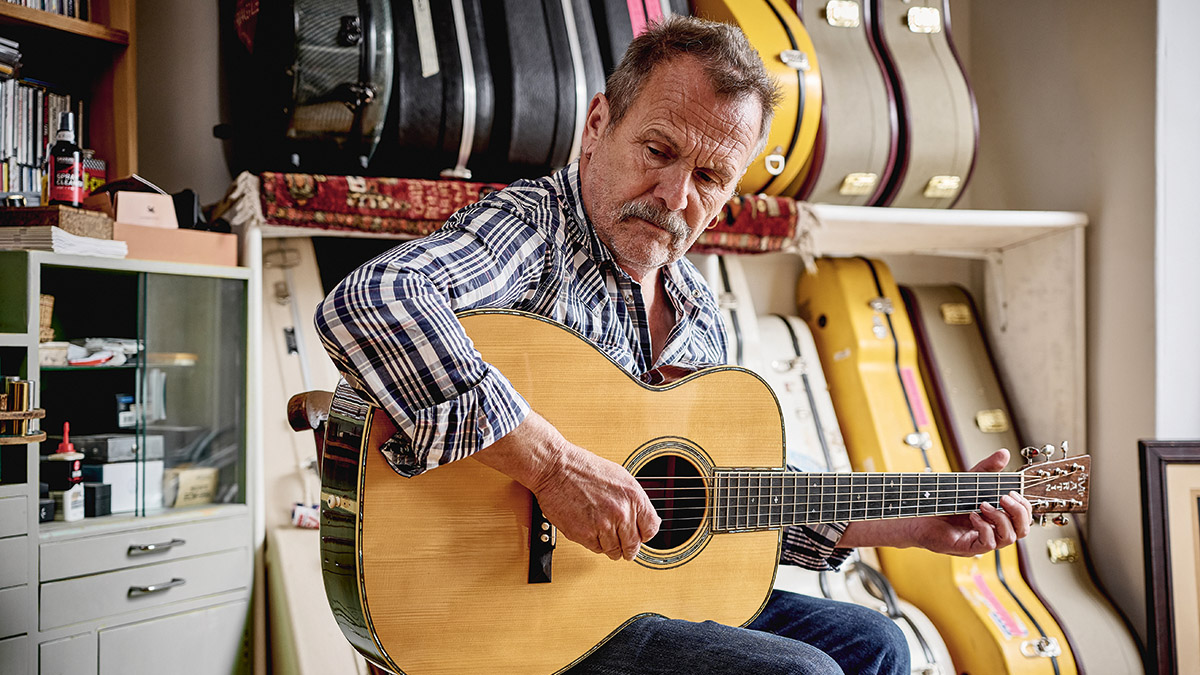
If you take an interest in folk, blues and other traditional styles of guitar music, you may have encountered a puzzling phenomenon when you try to understand where the styles come from. You can trace them back easily enough to the pre-war years of the 1930s and maybe a little before. But all too often, as one delves back further into the past, the trail becomes harder to follow…
Part of the reason is that the deepest roots of modern music derive from folk song, which was passed down orally from mother to daughter, from father to son. During England’s industrial revolution, many of these centuries-old musical traditions died out, as people moved from field to factory and the pattern of their lives changed utterly.
These sweeping changes might have meant extinction for some of England’s most beautiful and haunting folk-melodies – except for the fact that earlier English migrants to America took those songs with them. Like a plant uprooted from its native soil but replanted in fertile land far away, these songs survived and even flourished in the mountains of Kentucky and South Carolina.
Eventually, in the early 20th century, Cecil Sharp – an influential chronicler of folk music – learned about these surviving fragments of musical history and, aided by his indefatigable assistant Maud Karpeles, he ventured up into the trackless woods of the Appalachians and faithfully notated the songs people sang to him there.
Now, more than a century later, folk guitarist Martin Simpson and producer Thomm Jutz have brought together a stellar line-up of English and American folk musicians to perform some of the poignant and powerful songs Sharp collected during his travels. We join Martin in his Sheffield home to find out more – and try some of his delectable collection of vintage and custom acoustic guitars…
What’s the story behind Nothing But Green Willow? Where do the songs come from?
“The premise is actually [from] this big book here – English Folk Songs From The Southern Appalachians, collected by Cecil Sharp and Maud Karpeles in 1916 and 1918. Cecil Sharp is renowned for being the main folk song collector in England and a lot of what we now know about English folk music goes back to Cecil Sharp’s collecting.
“He started in the early years of the 20th century and he was not a modern man – he wasn’t a young man when he started, either. Some of his ideas were a bit sketchy and a bit unpleasant, but he did amass an incredible collection of songs.
“He became known in the States and he was asked to go to America to contribute music to a production of A Midsummer Night’s Dream in New York. While he was there, American song collectors and folklorists told him there was this extraordinary repository of English songs in the southern Appalachians, in North Carolina, Kentucky and Tennessee, because the place was full of English immigrants. And so he went and collected them.”
Reading the liner notes, the story of how Cecil and Maud crawled across bridges and tree trunks to reach remote villages is like something from a Coen Brothers movie…
“Well, yes [laughs]. Cecil used to bicycle around England, but you couldn’t bicycle around North Carolina then – there were no roads. So the thought of him and Maud Karpeles – who was an upper-middle-class lady – crossing trees across rivers… it was just phenomenal.”
The Nothing But Green Willow project was done in partnership with German musician and producer Thomm Jutz. How did you come to work with him on this project?
“Thomm Jutz is fantastic, he’s a fascinating character. He grew up in Bavaria and when he was six – he told me this just the other day – he was watching television and there was a singer called Bobby Bare, who was [singing a song called] Tequila Sheila and Thomm went, ‘That’s it. That’s what I want to do when I grow up.’
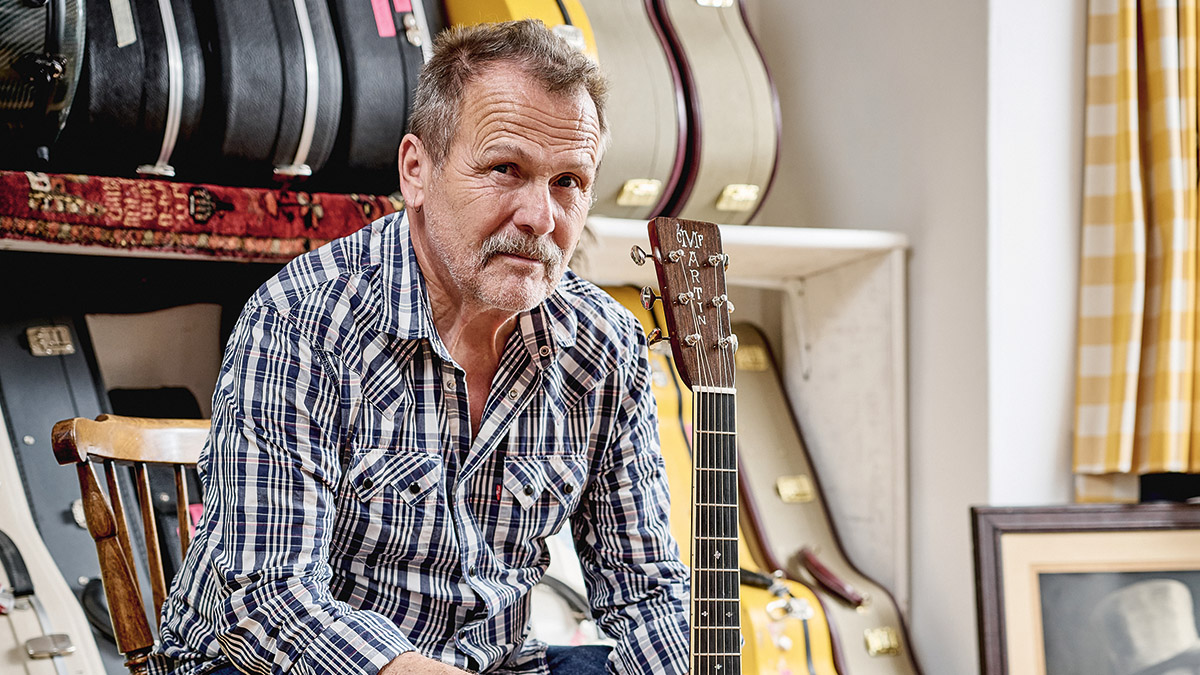
“Thomm is a professor at Belmont University in Nashville, he teaches songwriting. He’s constantly nominated for Grammys and for IBMA awards, and he’s a great guitar player, really good singer, really good producer. He’s worked with everybody and their dog!
“He had this idea that we should make a record based on the songs [Sharp and Karpeles collected from] two women in particular, Jane Gentry and Mary Sands, who were from Hot Springs, North Carolina. That’s in Madison County, which is renowned for being the site of absolutely brutal American Civil War stuff, horrific stuff.
“So I had a Zoom call with Thomm, talked about it, and said, ‘It’d be great to keep it simple – we should each pick six songs, and five other singers apart from ourselves.’ Every time I say this, it just makes me laugh. Because it’s such a risky premise, you know? You pick the songs, you pick the singers, you assign the songs to the singers. And then – what could possibly go wrong? [laughs] – we have to record them.
Thomm Jutz is a beautiful, beautiful guitar player, and he plays in standard tuning with a flat pick
“I was in the States in July 2022 doing Richard Thompson’s guitar workshop, and then I flew down to Nashville [to meet] Thomm, who I hadn’t met before; we’d never played together. He picked me up at the airport, took me to my hotel and said, ‘Come over to my place, and let’s sit down and see what we can do.’
“The first thing he did was play his version of The Gypsy Laddie, which is on the record. He’s a beautiful, beautiful guitar player, and he plays in standard tuning with a flat pick. It was great because it meant we were inhabiting different parts of the instrument in lots of ways. So we then sat down and I started to play along – within five minutes, we went, ‘Yeah, it’s gonna work.’ So that was the first track we recorded, we just nailed the guitar part.”
There are some extraordinary vocal performances on the album, which your and Thomm’s guitar work frames beautifully. Tell us about the challenges of getting each track to work with a range of British and American singers.
“Pretty Saro, which was sung by Odessa Settles, was one of the most interesting tracks to do… Her father [Walter Settles] was in the Fairfield Four – a massively successful and influential American gospel group. She’s a gospel singer and she was also the advisor for African American talent on the Baz Luhrmann Elvis movie, which is full of great performances by Black artists.
“Odessa sang on the soundtrack as well. So she came into the studio and we said, ‘What key would you like this in?’ And she said, ‘I don’t know.’ So we moved around a bit [trying to find the best key]. Because of the way I tune the guitar, I might have to completely change the tuning in order to cope with it. For instance, if somebody wants to sing in G, I’m probably going to use a G tuning. If it’s in E, I’m probably not [laughs].
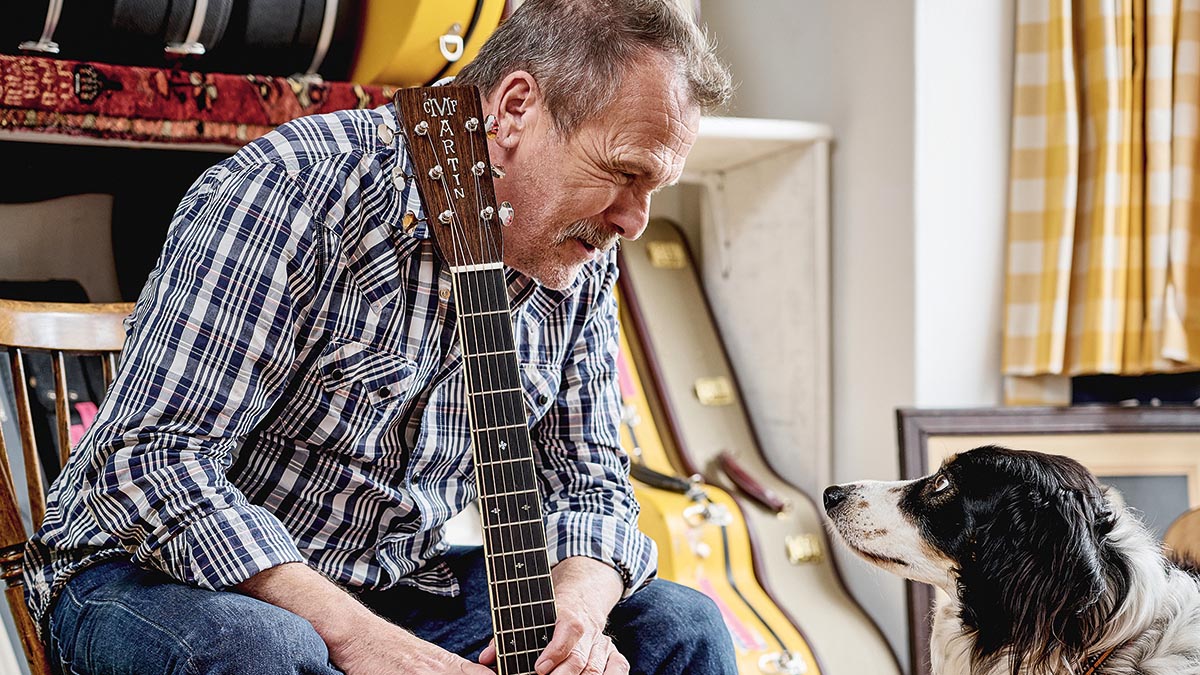
“So we got there in a couple of minutes of going, ‘Oh, that’s it, that’s where we go,’ and then we did maybe two run-throughs and recorded it. And it was done. There was no strict time [signature] at the beginning of that performance at all. The only time you felt, ‘Oh, wait, that’s in 3/4’ was on one of the instrumental verses.
“We were listening to her intake of breath to know when the line was gonna start, stuff like that. And it’s just bliss. I mean, what a fantastic thing to do? It’s how music should be – and it so rarely is.
“I’m very proud of this record because none of the tracks took longer than two hours… There are only two tracks on there that I actually did overdubs on – one of them was Sierra Hull’s version of Geordie. Thomm couldn’t get Sierra or Dale Ann Bradley [on Jacob’s Ladder] to be there when I was there, so he recorded those and I did overdubs on them.”
Was it challenging to get the overdubs to feel natural given the ‘in the room’ feeling you’d achieved with the other recordings?
“Well, it was funny because Sierra Hull is a godlike mandolin player. She is one of the young generation of mind-bogglingly great musicians, great players. Her husband, Justin Moses, was also playing on the track [and when I told people] they immediately went, ‘Oh is he playing dobro? Or is he playing banjo? Or is he playing guitar?’ And I said, ‘Well, no, he’s playing fiddle!’ It’s like, ‘Well, he plays them all equally well…’
“So I had to sit there and listen to this track, which is just so beautiful. But Thomm, who was producing us, said, ‘I really want you to play clawhammer banjo on this track.’ Which is like overdubbing with Einstein or something! [laughs] Completely insane. But I did it and I’m very proud of it.
Thomm, who was producing us, said, ‘I really want you to play clawhammer banjo on this track.’ Which is like overdubbing with Einstein or something! Completely insane
“So, anyway, we did five tracks in the States. Then we came [to the UK] and shifted gears a bit because we weren’t in one studio. We started down in Frome and recorded Cara Dillon [singing Come All You Fair and Tender Ladies] with Sam Lakeman. Then the next day, we had Seth Lakeman come in, and again we only did three takes of Edward. Basically, we could have recorded it in the kitchen the first time we played it through and it would have been like it is.
“To actually catch a performance like that is really interesting. If you listen to Seth’s track, his voice is almost shot because he came to the studio straight from a festival gig… But you know what? It doesn’t matter. If anything, it makes it more real, it makes it more of a performance that you’ve caught.”
You arranged these songs beautifully for guitar, but they wouldn’t have been accompanied by guitar originally, we’re guessing?
“No, they were almost all unaccompanied. And likewise, in the States the singers that Sharp collected were mostly singing unaccompanied. But – and this is the thing that fascinates me about American folk music – there was a complete change in the way people performed those songs.
“A lot of it came from the fact there was huge input from African American musicians. Take, for example, The Wagoner’s Lad, the song I recorded on Nothing But Green Willow. I knew that song because it was recorded by a man called Buell Kazee, who is one of the gods of American folk music, as far as I’m concerned.
“He made recordings in 1927 and I thought that was kind of the end of it. So I was so shocked to find a film of him in the 1960s playing the banjo and demonstrating his technique. He was a phenomenal singer with this outrageous banjo playing, which I kind of made reference to in the way I played the accompaniment of that song.
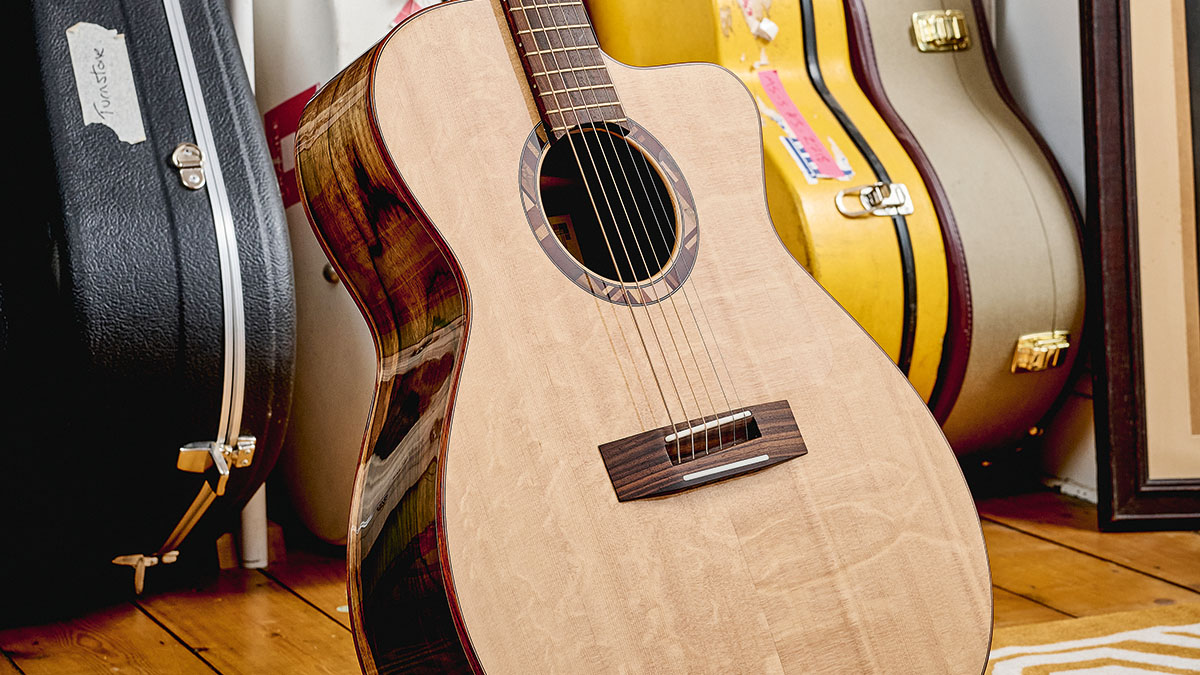
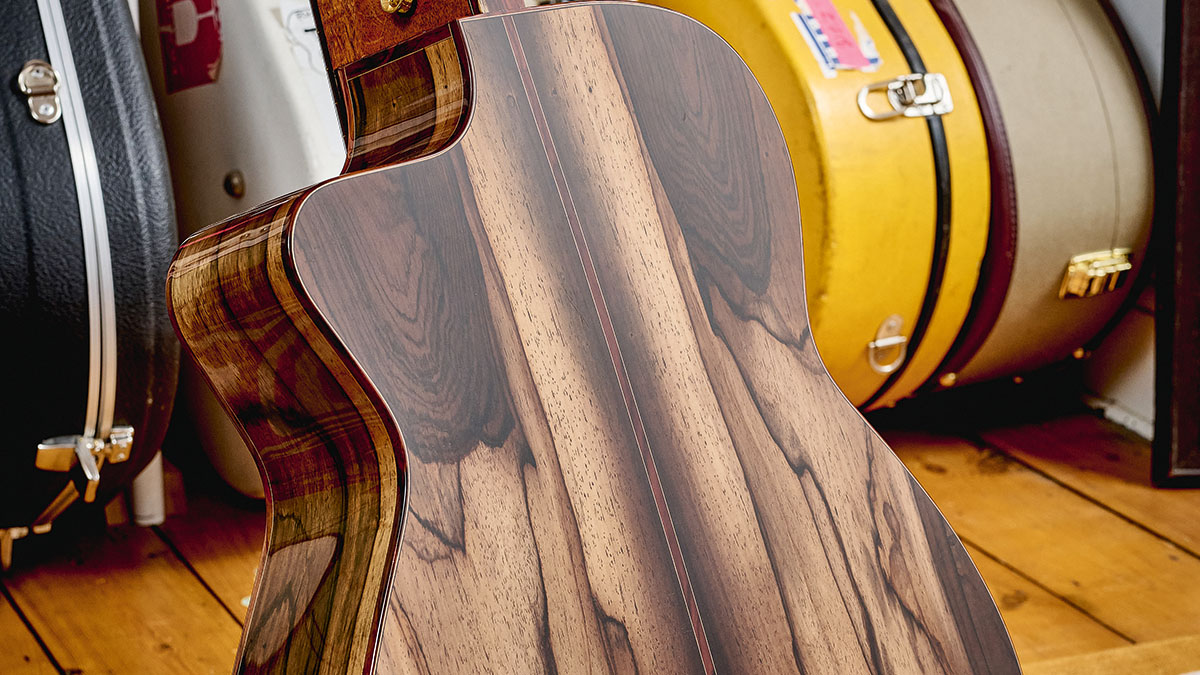
“[In the early 20th century you had accompaniment] from the banjo and fiddle, and the mandolin as well. But the guitar in old-timey music is not necessarily that interesting. But as it develops, and as it takes more African American influence onboard, it becomes more and more interesting.
“Then you get to the point where you’ve got Doc Watson and Clarence Ashley playing songs that have these floating verses from Old English traditional songs, which Buell Kazee called ‘vagrant stanzas’ – one of my favourite expressions, which I’ve used for an album title [in 2013]. So it is a constant cross-fertilisation, as far as I’m concerned.
“When I was a kid, I was listening to all these different strands and the more I became fascinated, the more I would absorb different strands: blues, banjo playing, all the different things, English traditional music, Scots music and batting it back and forth all the time. I even used to joke and say I invented American folk music doing this [laughs].”
What guitars did you use to record Nothing But Green Willow?
‘I played two guitars on the album. One was, to my great surprise, a [Martin] Norman Blake 000-18 signature model, which was a very simple guitar based on the regular modern [laughs]… 1930 body shape, 14-fret neck. Except [US bluegrass musician] Norman Blake had them make it a 12-fret neck simply by moving the bridge down.
“And, boy, did that work! It’s a great guitar. I mean, if I could find one – they hardly made any – I would certainly have one of those. The other guitar I used is my Taran, which I now use on stage exclusively because it’s just… everything about it works on stage. I mean, the pickup system is insane.”
You have such a diverse and extraordinary collection of vintage and custom acoustics. What’s the common thread? What qualities do you look for in an acoustic?
“I’m looking to have variety, but for the guitars to also be articulate, pianistic… that’s what I’m looking for. Occasionally, you find yourself in a position where you might want to make a sound like a particular old recording. I spend a lot of time utilising open strings, rather than [traditional barre chords], and I always joke when I’m teaching people, ‘When you make that chord shape [plays an F], it’s obvious why it’s called the ‘F’ chord!’ Why would you want to do that? [laughs]”
- Nothing But Green Willow: The Songs of Mary Sands and Jane Gentry is out now via Proper Music.







